The Ming Tombs (明十三陵) are a collection of mausoleums built by the emperors of the Ming Dynasty (1368 - 1644 AD).
Although the first Ming emperor's tomb is located near his capital, Nanjing, and the second emperor disappeared, 13 of the remaining 14 Ming emperors are buried alongside their empresses and consorts in a cluster near Beijing – it is the most extensive imperial burial complex in China.
The Ming Tombs are a UNESCO World Heritage Site, recognized for their cultural significance and for being an outstanding example of ancient imperial tomb architecture.

Image via Handout
The burial complex is renowned worldwide as a masterpiece for the stunning integration of the structures into the natural landscape.
Construction began in 1409 AD under the reign of Zhu Di (the third Ming emperor) and continued for over two hundred years.
The landmark offers a glimpse into ancient Chinese imperial life and burial rituals, as well as the customs and beliefs of the Ming Dynasty.

Aerial view of the Ming Tombs. Image via Ai
Situated in the Changping District of Beijing, about 42 kilometers north-northwest of the city center, the tombs are strategically located in a picturesque valley at the foot of the Tianshou Mountains.
The spot was chosen according to Feng Shui principles to ensure good fortune for the longevity of the Ming Dynasty and protection for the burial grounds, as well as for the prosperity of the occupants in the afterlife.
The Tianshou Mountains are meant to deflect negative energy from the north, and the entire layout of the Ming Tombs was meticulously planned according to geomancy (the art of placing or arranging buildings auspiciously).
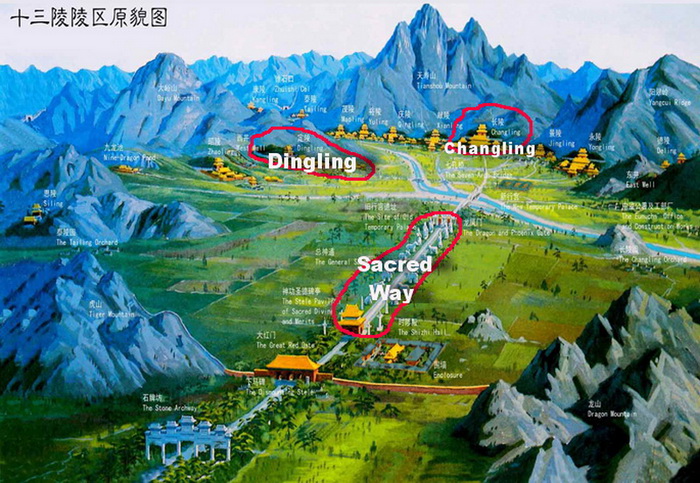
Ming Tombs map. Image via Tour Beijing
Only three of the tombs are open to the public: Dingling, Changling, and Zhaoling – ling translates to ‘tomb’ or 'mausoleum.' However, Beijing has announced plans to have all 13 tombs open to the public by 2030.
Of the currently open tombs, only Dingling (often called the Underground Palace) has been excavated.
Unfortunately, with how far apart they are situated – and the fact there are no shuttle buses between them – you’ll likely want to choose just one to check out.
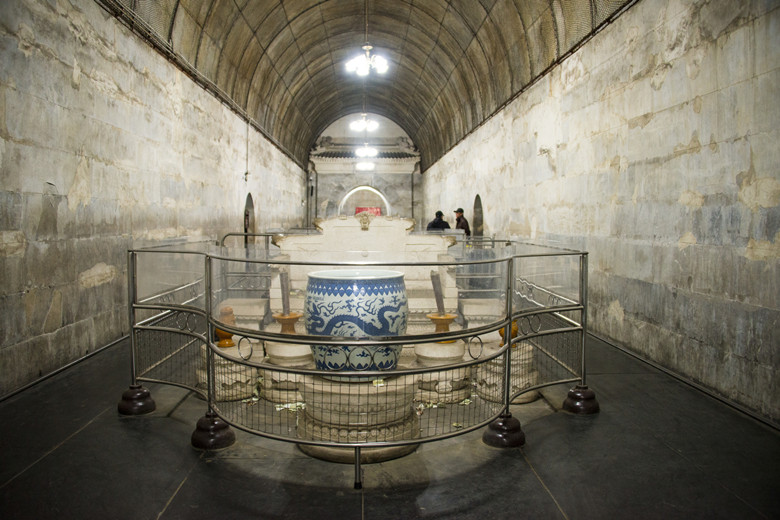
Dingling. Image via Wild Great Wall
If you are able to handle a bit of a walk and eight flights of stairs, we recommend you check out Dingling, where you can see the underground stone throne and excavated chamber.
For those hoping to avoid too much exertion, Changling is the largest and best-preserved of the tombs open to the public. Changling is where the Yongle Emperor, Zhu Di – who began the construction of the Ming Tombs – is buried with his wife, Empress Xu.
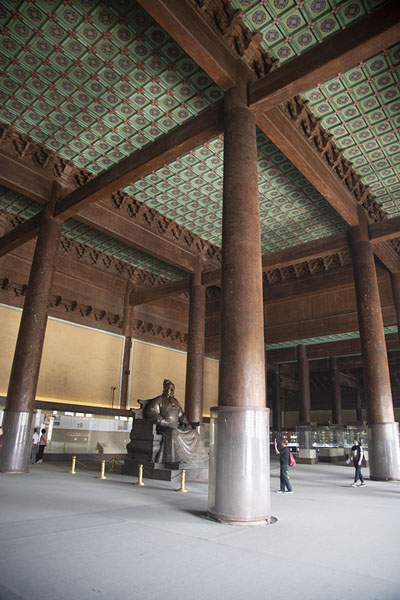
The Hall of Eminent Favor. Image via Around the World
Although, Changling is not excavated, there is a collection of artifacts and valuables unearthed from around the tombs on display. It also features the Hall of Eminent Favor (Ling'en Hall), which is one of the largest wooden buildings in China – it incorporates 60 massive Nanmu wood columns.
To visit either Dingling or Changling, you’ll pass by the Sacred Way (or Spirit Way), which is a path that begins with a large stone archway and includes 18 pairs of larger-than-life mythical creatures and officials, each with symbolic meaning. These statues are believed to guide and guard the souls of the deceased emperors.
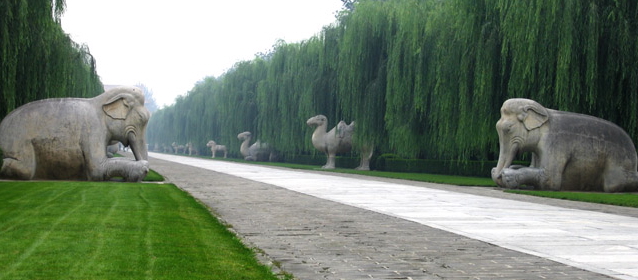
The Sacred Way. Image via SKJ Travel
The Ming Tombs are shrouded in legends and mysteries, including many tales of curses to deter grave robbers. Luckily, this beautiful site has proven to be quite safe for visitors!
If you’re looking for a daytrip full of history, culture, and architecture, the Ming Tombs make a great stop on the way to popular sections of the Great Wall, including Juyongguan, Badaling and Mutianyu.
Opening Hours
8.30am to 4.30pm
Entrance Tickets
Peak Season: April 1 to October 31
Dingling: RMB60
Changling: RMB45
Zhaoling: RMB30
Sacred Way: RMB35
Off Season: November 1 to March 31
Dingling: RMB40
Changling: RMB30
Zhaoling: RMB20
Sacred Way: RMB25
Transportation
Subway: The closest subway station is Ming Tombs on the Changping Line. From there, take Exit B and walk 8 minutes to the Jiantou Cunweihui bus stop. Board the Chang 78 bus for 4 stops to Dagongmen and then walk 5 minutes to the entrance.
Bus: Take bus 872 from the Deshengmen Bus Terminal directly to the Ming Tombs bus stop, Dagongmen.
Taxi: Take a private car or taxi to Changchi Lu, Shisanling Town, Changping.
[Cover image via Ai]
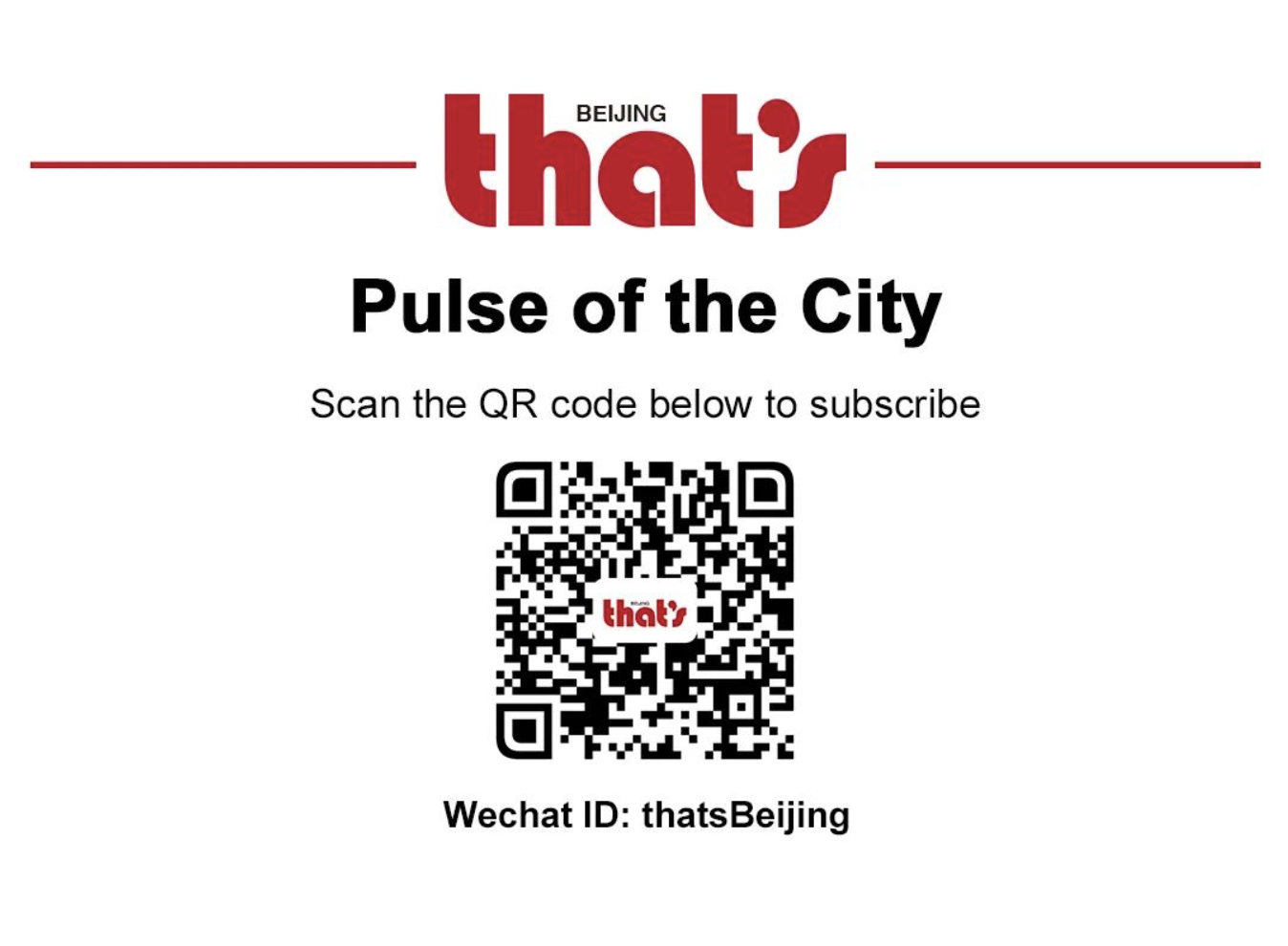





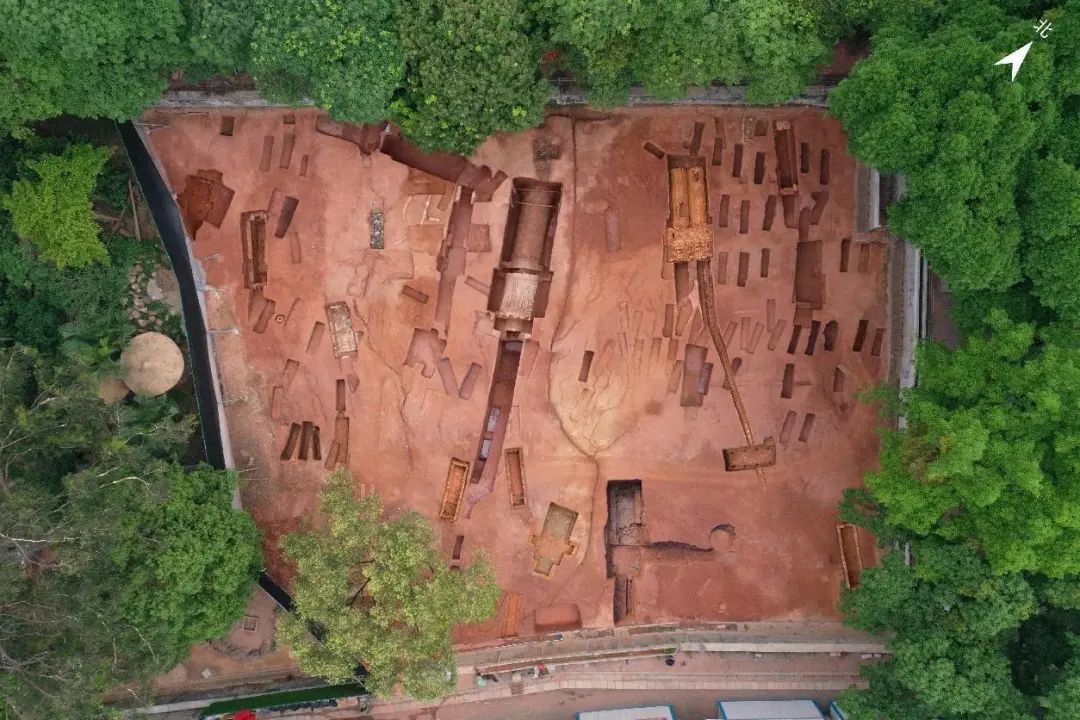















0 User Comments